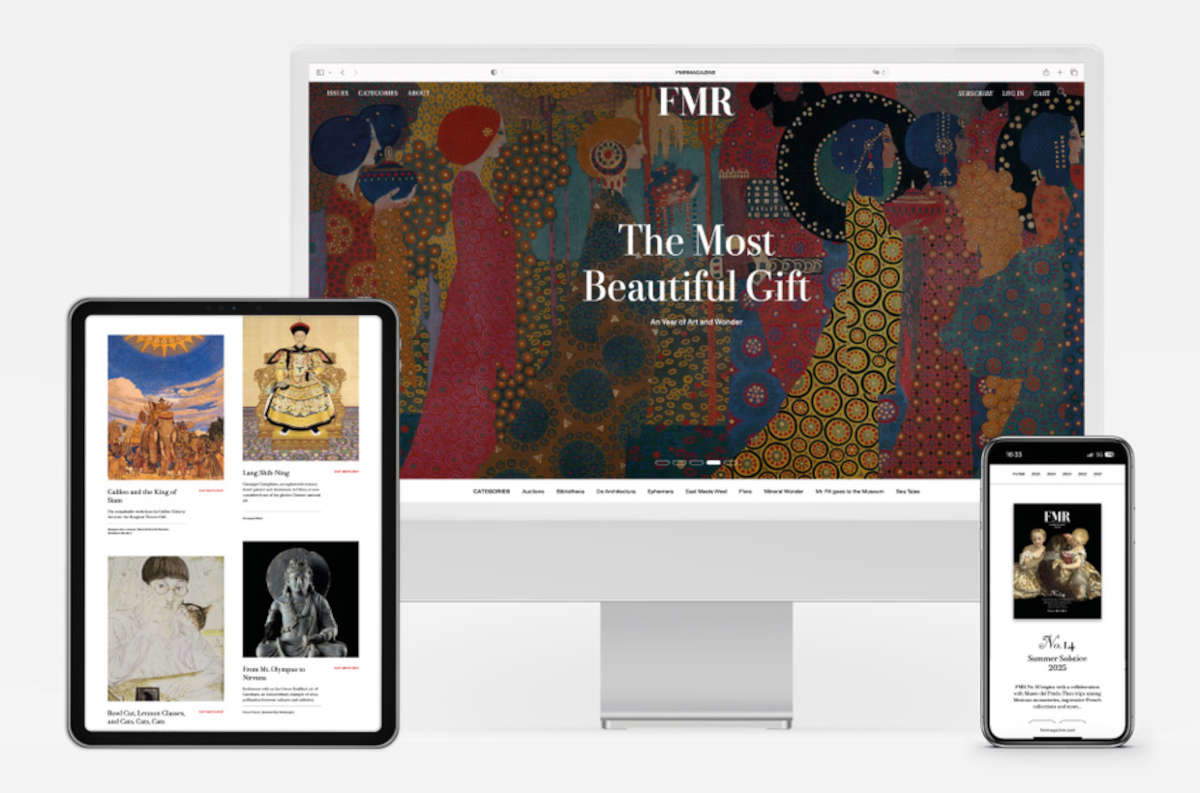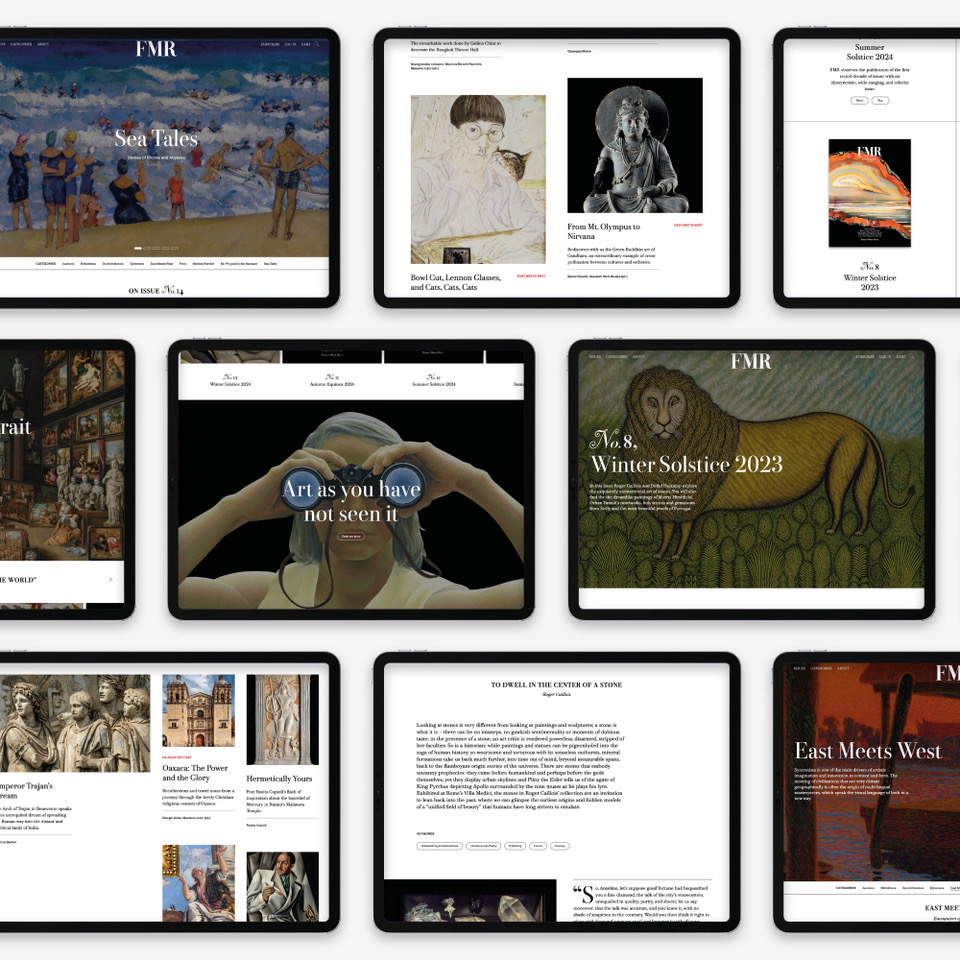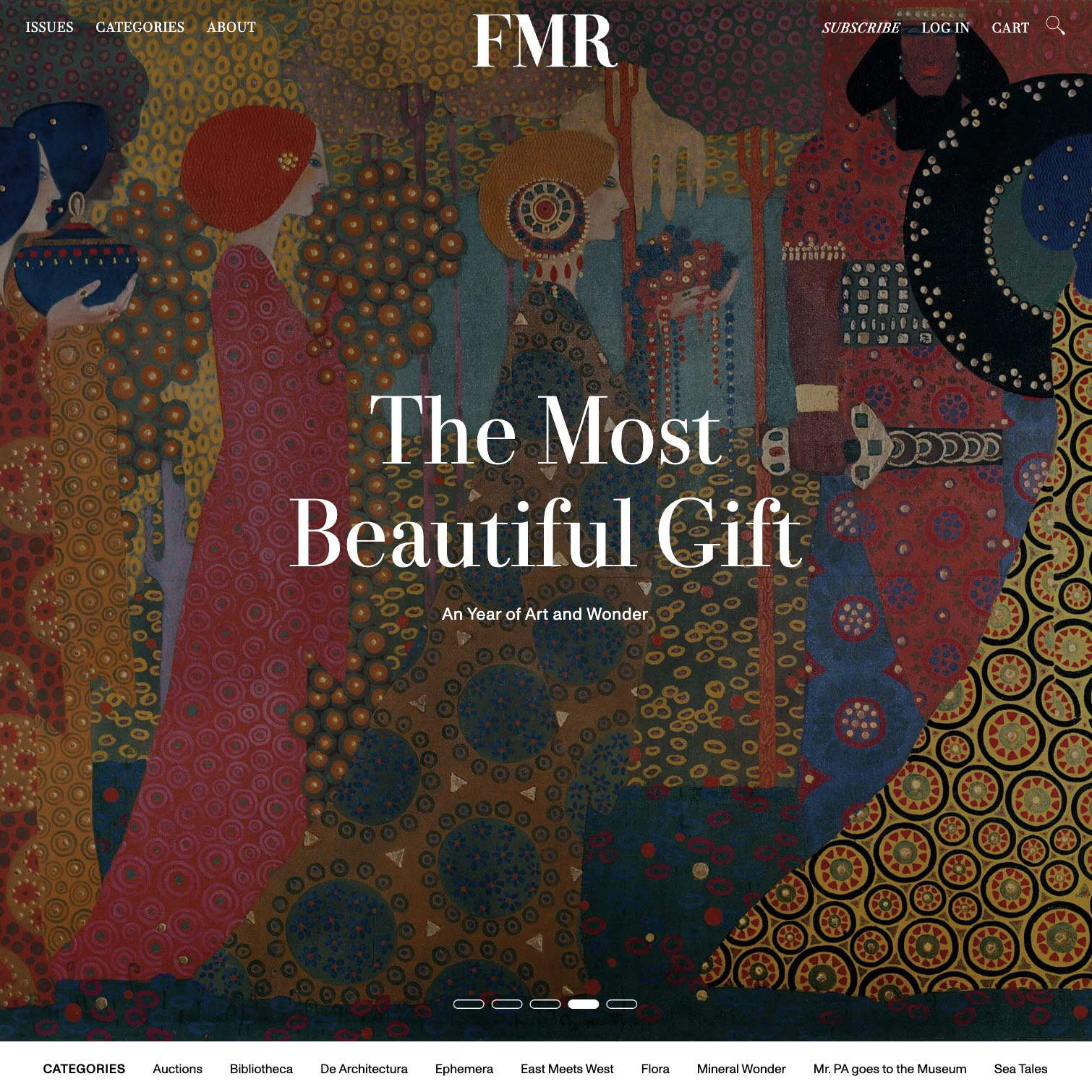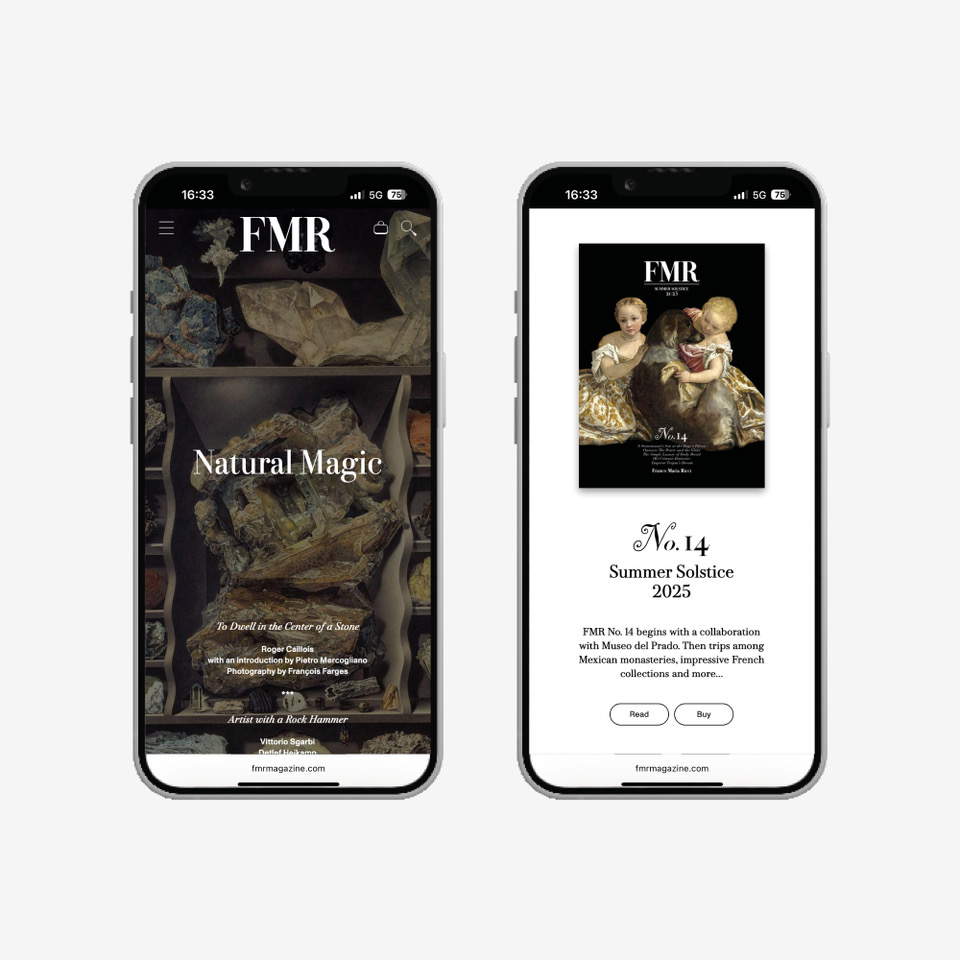FMR magazine opens a new chapter in its history. After its rebirth in the print edition in 2021, now in its fifteenth issue, the historic title is now also in digital format, confirming its vocation to spread beauty in all its forms but with a language suited to the present. The design of the new digital FMR (the magazine can be reached at fmrmagazine.com) was created in collaboration with Studio Blanco and maintains the original spirit of the magazine while lightening in structure. As author Giovanni Mariotti wrote, it is a product “equal in spirit but very light in body, dematerialized but full of substance.”
The switch to a new medium does not affect the aesthetic recognizability of the masthead, which remains faithful to the typographic and iconographic setting that made it famous: photographs on a black background and text in Bodoni typeface. The most notable difference lies in the reading mode. In the digital version, the images flow in sync with the text, allowing the reader to see what is being talked about while reading it.
The official presentation of digital FMR will take place on Sunday, September 14, as part of the third edition of Mag to Mag, an international festival conceived by Frab’s and dedicated to independent magazines. The event, hosted by BASE Milano, will be an opportunity to discuss publishing transformations with a talk entitled “Editorial Aberrations.” Among the guests announced are Edoardo Pepino, editor in chief of the magazine; Carlo Antonelli, editorial director of Mudec United; and Valerio Tamagnini, founder of Studio Blanco.


Tamagnini himself emphasized the spirit animating the project: “We imagined a digital magazine capable of remaining faithful to its heritage and at the same time projecting itself into a contemporary language, open and close to multiple generations. A first step toward a new FMR fantasy world, parallel and complementary to the printed one, destined to grow with exclusive content.”
The new platform not only reproduces the magazine online, but offers a navigation system by thematic categories. This allows readers to weave links between articles from different issues in order to create their own path through eras, artists, themes and emotional affinities.
Among the sections, there will be Auctions, where Simone Facchinetti and Massimo Navoni recount the mechanisms and behind-the-scenes of a world where surprises and hidden treasures intertwine; Bibliotheca, which collects articles dedicated to the most beautiful and mysterious books, treated with the same care reserved for paintings or sculptures. Again, De Architectura explores the projects born on the tables of architects, identifying in them the spark of the work of art, while with Effemeridi, the magazine offers selections from temporary exhibitions that provide rare opportunities for comparison between normally distant works. Continuing on, East and West investigates the encounter between distant civilizations, from which masterpieces capable of speaking unprecedented visual languages are often born; Flora tackles the eternal confrontation between nature and its artistic representation; Mineral Ecstasy focuses on the beauty imprisoned in the transparencies of gems, crystals and precious stones; and Stories of the Sea devotes space to the imagery linked to water as a symbol, journey and artistic inspiration. Finally, a special section is Mr. PA Goes to the Museum, which collects the reflections of Orhan Pamuk’s alter ego, Nobel laureate in literature. Visiting the Metropolitan Museum in New York, Pamuk dwells on several works of art, drawing from them existential and autobiographical meditations.


There is no shortage of diverse modes of access. Some items are available for free, giving everyone a chance to sample the FMR universe. For a complete experience, a subscription is provided. The quarterly digital formula costs 20 euros, the annual one 60 euros. Both provide full access to articles and the monthly newsletter. Those who choose the print edition are not excluded from the news: at a cost of 160 euros, the subscription includes the four print issues, the library box set and unlimited access to the digital archive, as well as the newsletter.
The collected holdings are already considerable. Nearly 150 articles have been published since 2021, all of which can be consulted online from any device, in any place, at any time. A collection that testifies to the continuity of a publishing project born to preserve and disseminate beauty, today expanded by digital tools that multiply the possibilities of fruition. “FMR digital,” the title points out, “is an invitation to reread the artistic heritage with new eyes, without giving up the refinement, depth and beauty that have made the magazine famous all over the world.”
 |
| FMR opens to the web: historic art magazine also goes digital |
Warning: the translation into English of the original Italian article was created using automatic tools. We undertake to review all articles, but we do not guarantee the total absence of inaccuracies in the translation due to the program. You can find the original by clicking on the ITA button. If you find any mistake,please contact us.